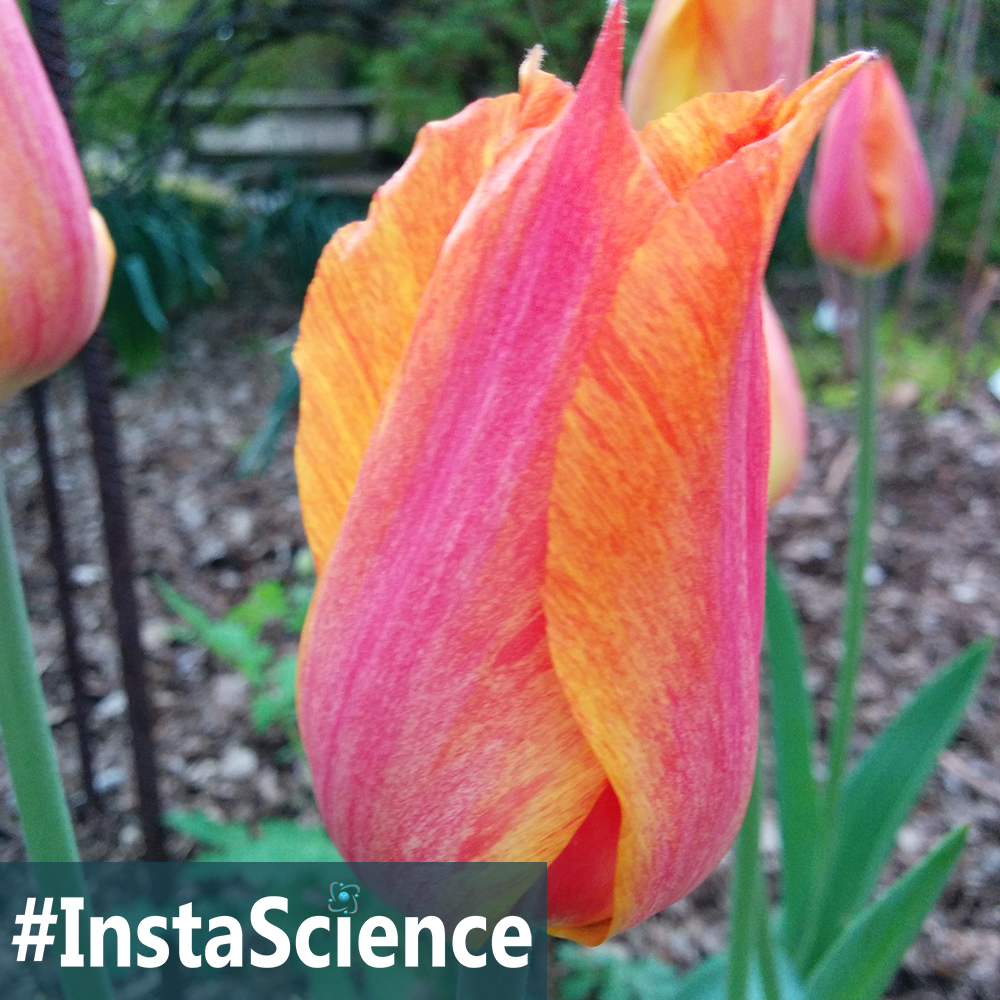
Spring is in the air!
Flowers are blooming and bees are buzzing!
One of my favorite parts of spring are the bounty of blooms that are popping, brightening the landscape with their color. And the tulip is the queen of these spring flowers!
Tulips bloom between March and May and they hold the spot of the most sought after spring flowers. These plants are part of a group of bulb flowers, meaning that they form a bulbous thickening at the base of the stem, which stores food for their quick growth in spring.
Tulips blooms come in a wide range of sizes and colors, but each one has six petals around a central stem. The male and female parts of the flower are clearly visible, which makes them excellent subjects for nature study!
Fun Fact – There are over 3,000 registered varieties of tulips and that list is growing every year!
Teaching Science at Home
Want to learn more about tulips? Check out the following articles:
- Learn more about tulips from the Flower Expert.
- Tulips in Holland
- {Video} Watch a drone fly over a tulip field in Oregon
Related Homeschool Science Activities
Keep the learning going with these science activities!
- Dissections – Have your students dissect a flower or a tulip bulb.
- Tulip Prints – Have your students make their own field of tulips using forks!
- Poem – “To a Tulip-bulb” by Edith Nesbit

 Sign up below to receive weekly tips & tools for homeschool science and we'll send you a FREE copy of
Sign up below to receive weekly tips & tools for homeschool science and we'll send you a FREE copy of